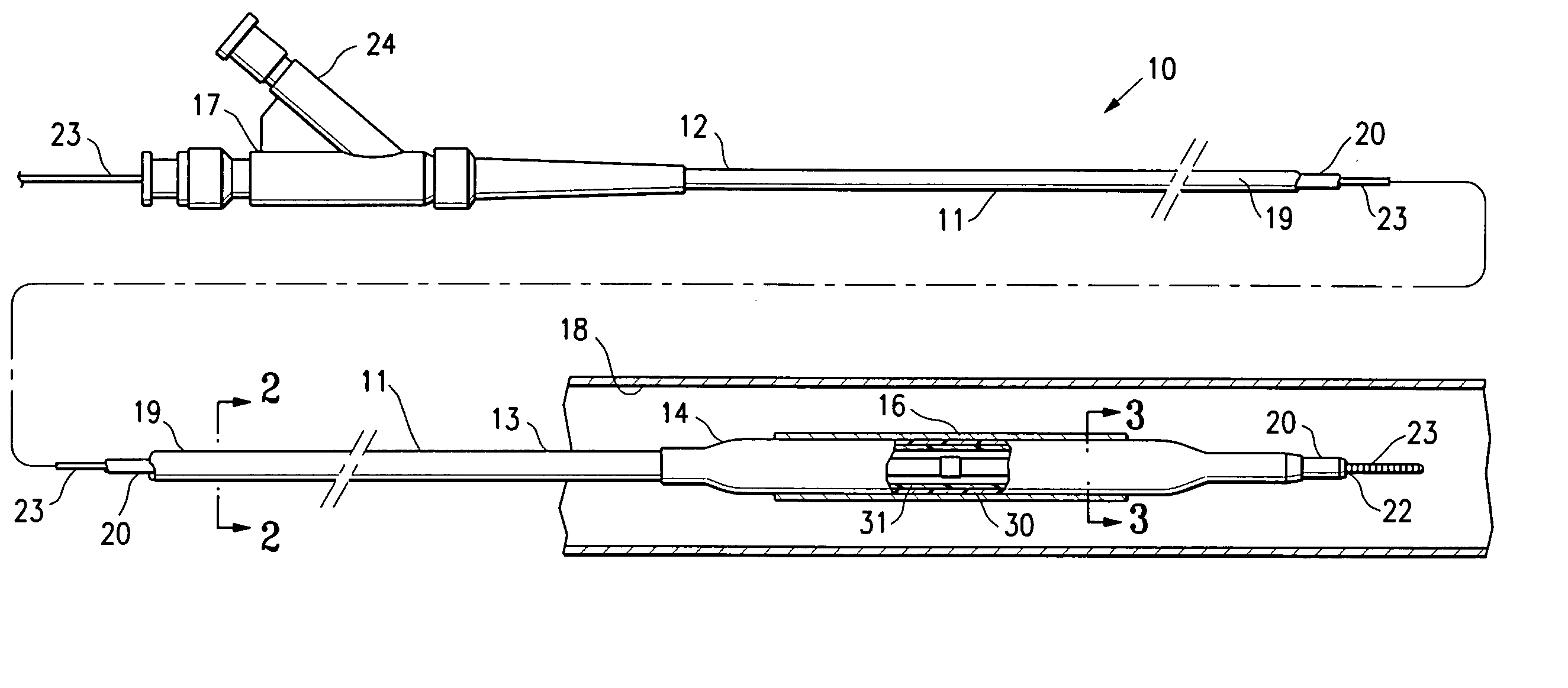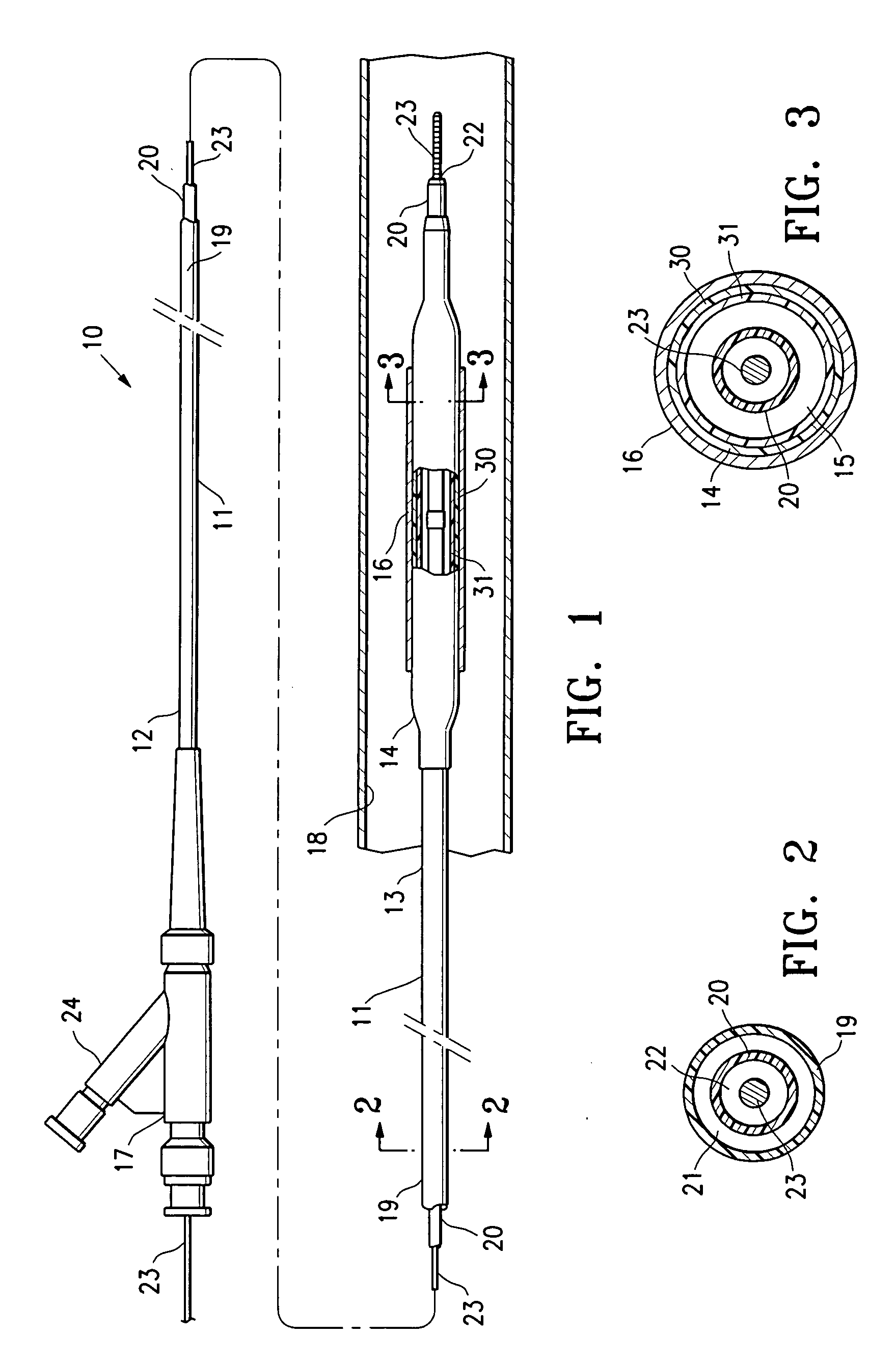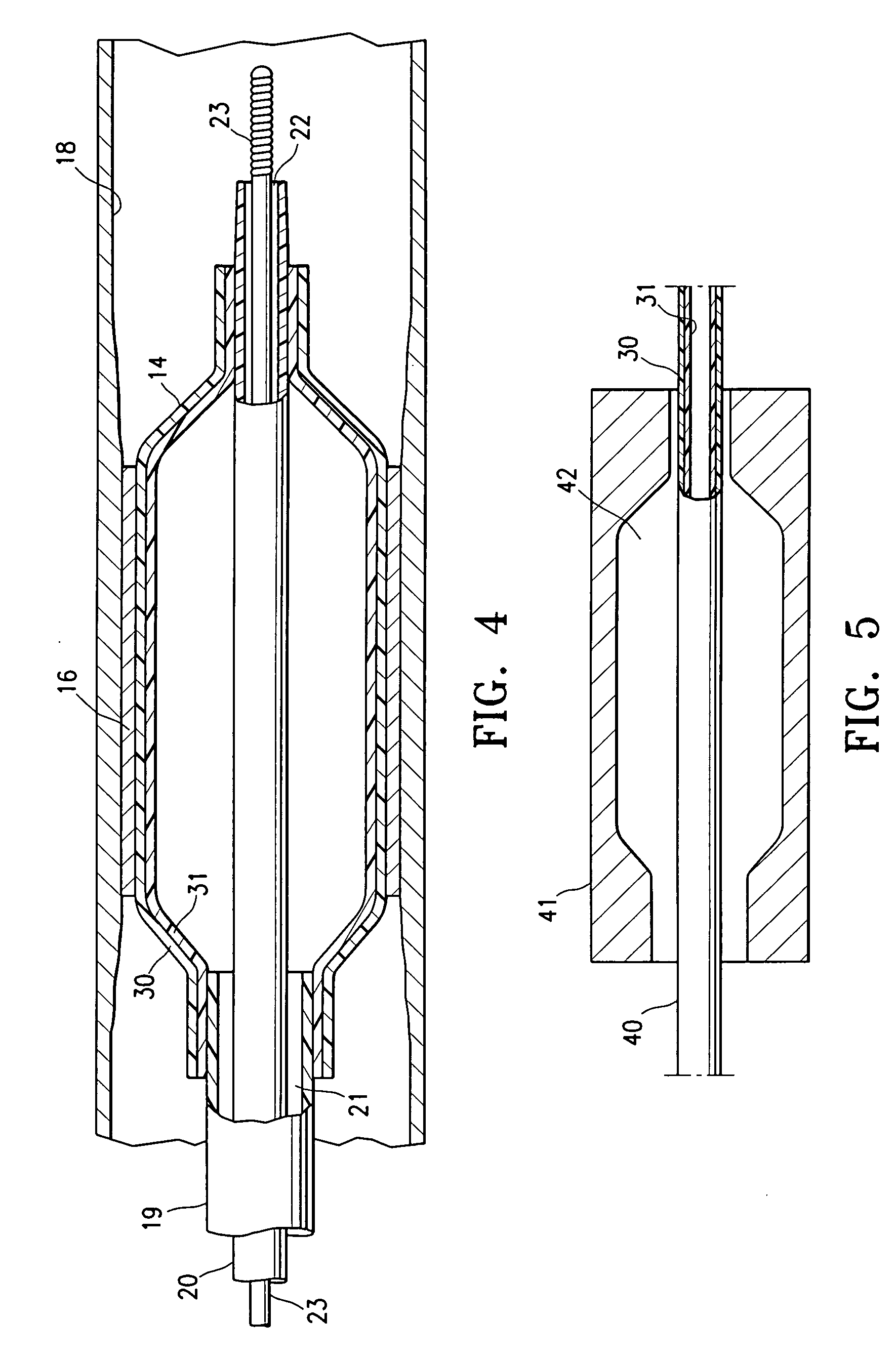Non-compliant multilayered balloon for a catheter
a multi-layered, non-compliant technology, applied in the direction of catheters, prostheses, dilators, etc., can solve the problems of balloon blowing process instability, polymer tubing often ruptures or tears, and vessel wall trauma, etc., to achieve high flexibility and improve low compliance
- Summary
- Abstract
- Description
- Claims
- Application Information
AI Technical Summary
Benefits of technology
Problems solved by technology
Method used
Image
Examples
example
[0044] Multilayered balloon tubing, formed by coextrusion, had overall dimensions of 0.0155 inch inner diameter (ID) and 0.0365 inch outer diameter (OD). The tubing had an inner layer of 63D PEBAX with a wall thickness 0.001 inches, a midlayer of 70D PEBAX with a wall thickness of 0.001 inches, and an outer layer of 72D PEBAX with a wall thickness of 0.0085 inches. Wall thickness values are a single wall thickness, unless otherwise identified as a double wall thickness (DWT). The tubing was blow-molded by heating and pressurizing the tubing in a 0.1215 inch ID balloon mold in a single blow cycle, resulting in a multilayered balloon having an average wall thickness (DWT) of 0.00163 inches and the following BURs for the balloon layers: 63D Inner Layer ID of 0.0155 inch gives a BUR of 7.83 (0.1215 / 0.0155); 70D midlayer ID of 0.0175 inch gives a BUR of 6.94 (0.1215 / 0.0175); and 72D outer layer ID of 0.0195 inch gives a BUR of 6.23 (0.1215 / 0.0195). The calculated BUR value of balloons ma...
PUM
| Property | Measurement | Unit |
|---|---|---|
| Electric dipole moment | aaaaa | aaaaa |
| Electric dipole moment | aaaaa | aaaaa |
| Thickness | aaaaa | aaaaa |
Abstract
Description
Claims
Application Information
 Login to View More
Login to View More - R&D
- Intellectual Property
- Life Sciences
- Materials
- Tech Scout
- Unparalleled Data Quality
- Higher Quality Content
- 60% Fewer Hallucinations
Browse by: Latest US Patents, China's latest patents, Technical Efficacy Thesaurus, Application Domain, Technology Topic, Popular Technical Reports.
© 2025 PatSnap. All rights reserved.Legal|Privacy policy|Modern Slavery Act Transparency Statement|Sitemap|About US| Contact US: help@patsnap.com



